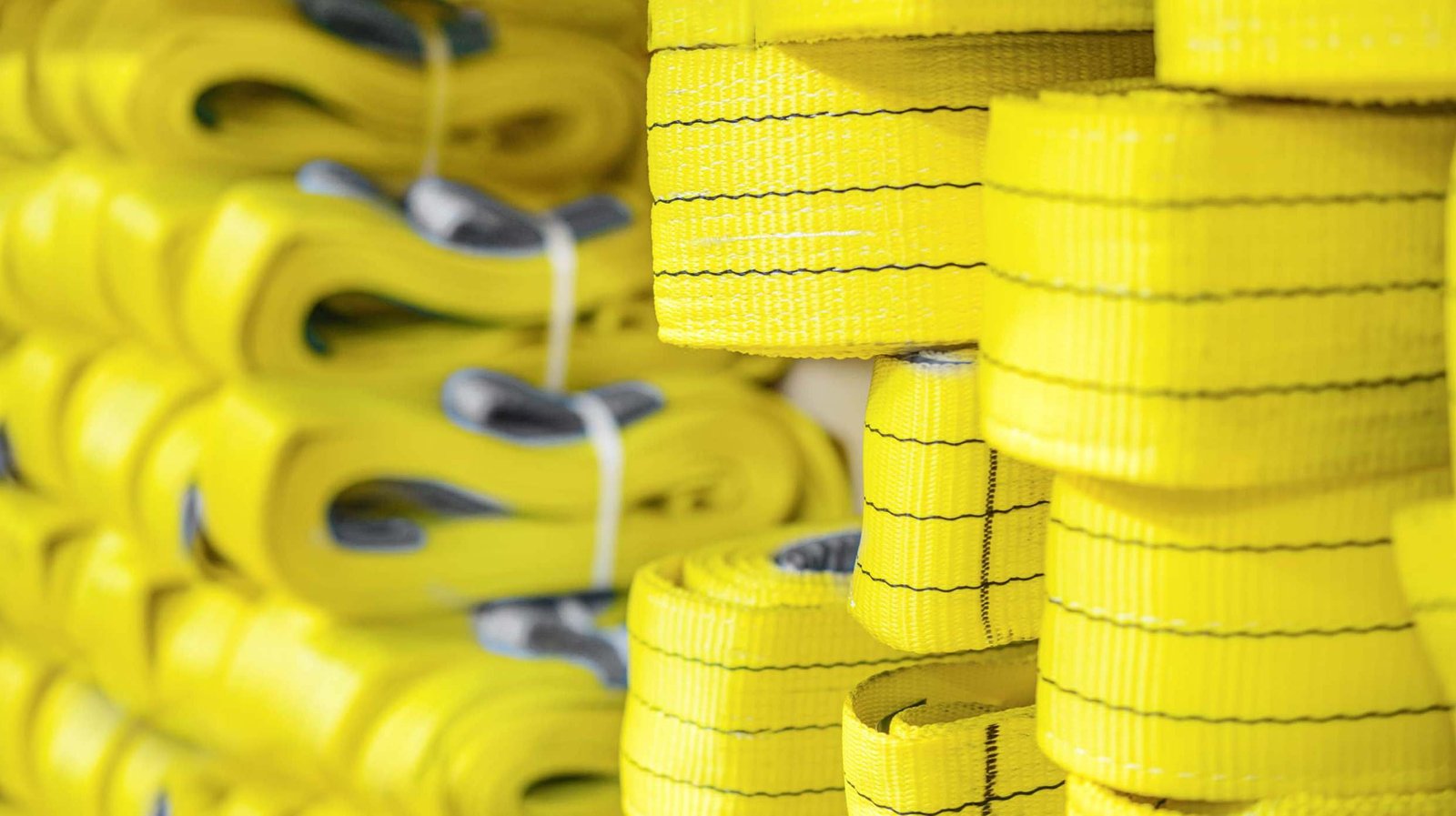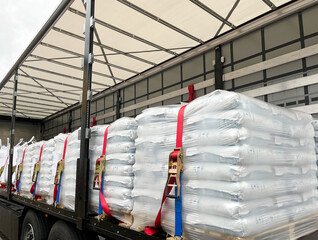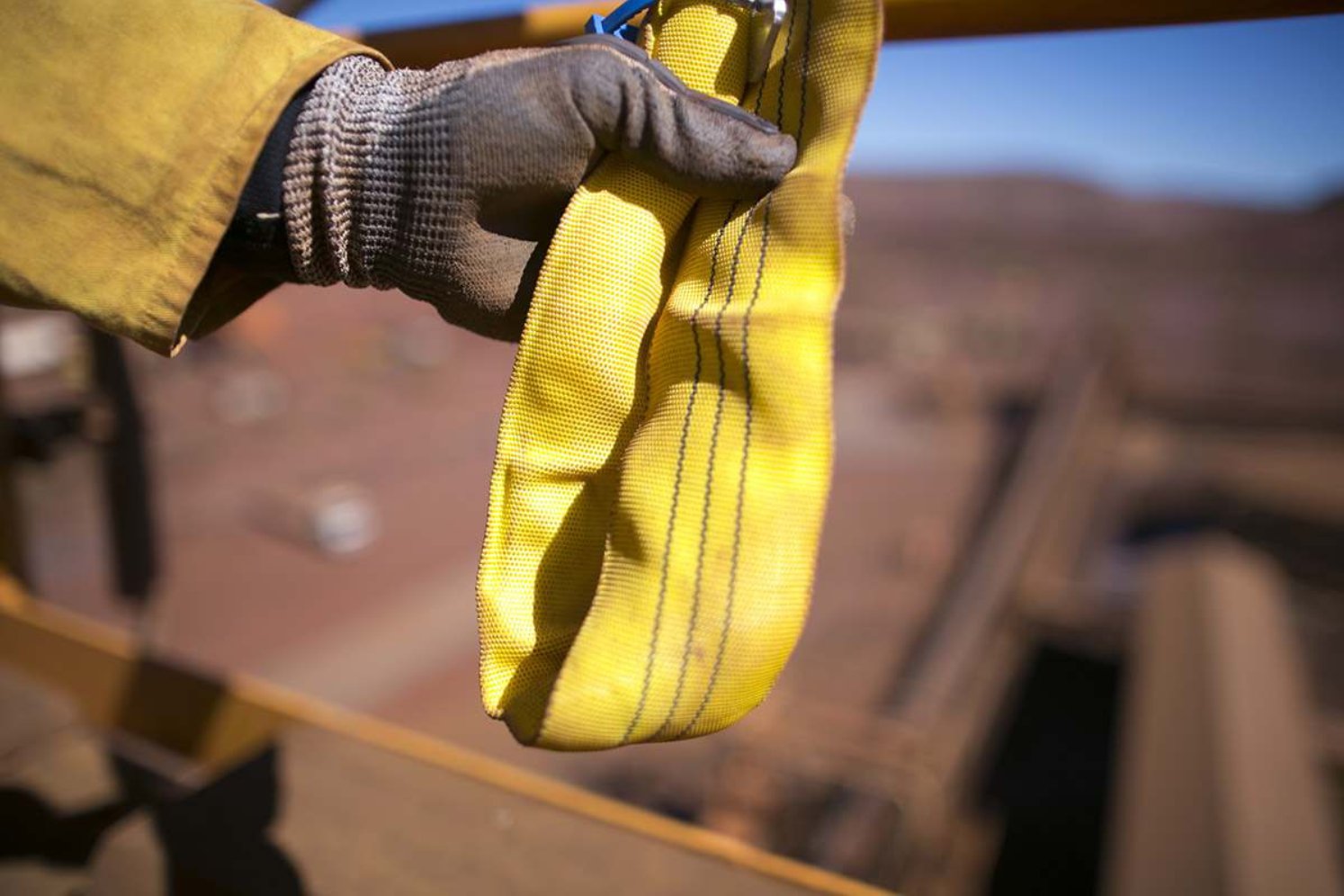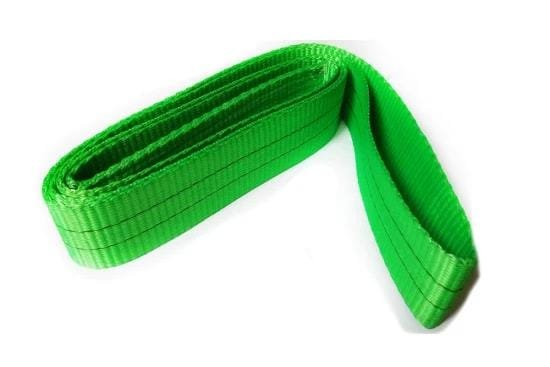Our Products

Polyester Slings
Polyester Slings: Durable and flexible, woven from reinforced yarns, ideal for professional lifting tasks with safety factors from 5:1 to 7:1. The trusted choice for quality and performance in rigging.
Know More
Ratchet Belt
Ratchet Lashing, a modern alternative to traditional cargo securing, offers superior control with webbing widths from 25mm to 75mm. Compliant with BS 5759 standards, it ensures quality and safety, replacing jute ropes and chains in transportation and storage.
Know More
Round Slings
The Round Sling, with high-denier polyester yarn and a seamless sleeve, provides durable lifting with low stretch. Its tubular design ensures strength and allows easy rotation of hook and load points for an extended sling cycle.
Know More
Flat Webbing Slings
Crafted from polyester webbing in various forms, including strap, endless, and reverse eye, this versatile sling conforms to BS3481 (2) standards. With rotating hook and load contact points, reinforced loops, and options for single or multiply configurations, it's an economical and adaptable choice for general-purpose lifting in any hitch.
Know MoreCare & Storage of Slings
Maintaining the longevity and safety of slings involves a twofold approach of regular cleaning and proper storage. Keeping slings free from dirt and foreign materials is achieved through a simple solution of mild soap and water, promoting both visual cleanliness and ease of damage inspection. After cleaning, ensuring thorough drying before storage is crucial to prevent mold and maintain optimal sling condition. Additionally, storing slings in a designated location when not in use minimizes wear, facilitates easy access, and contributes to overall safety and operational efficiency.
When slings are not in use, we recommend that you store them in a proper location.
Make sure that the locations is:

COOL
To prevent damage due to exposure to excessive temperature
DRY
To prevent the growth of bacteria, which can degrade synthetic fibers.
DARK
To prevent the deleterious effects of prolonged exposure to sources of ultraviolet light.
Precautionary Measures
Environmental
Mechanical
Environmental
Temperature : Conventional synthetic products can not be used in application where temperature exceed 180 C 0 0 0 (82 C) or go below -40 F (-40 C). Application outside those parameters can be addressed by consulting us for specific recommendations.
Chemical : Chemically active environment can affect the strength of synthetic products in varying degrees from moderate to total degradation. The material used in construction of the sling system must be compatible with the mechanical and environmental requirements-imposed. Fumes, spray, mists, vapours and liquids of acids or alkalies can degrade synthetic products. The chemical agents must be identified..
Mechanical
-
Do not use slings that are damaged or defective.
-
Avoid using slings with missing or illegible tags.
-
Refrain from twisting and kinking sling legs; avoid tying slings into knots.
-
Do not force slings used in a choker hitch to tighten by pounding with hammers.
-
Tow slings should be used to balance loads in a choker hitch to prevent accidents.
-
Keep sling tags and labels away from the load, hook, and choke action.
-
Avoid placing the load-carrying splice in a connection point or lifting mechanism.
-
Do not drag slings on the floor or over abrasive surfaces.
-
Never pull slings from under a load resting on them; ensure fittings are free of sharp edges.
-
Permanent marking with the work load limit and material is essential for each type of hitch.
-
Do not use slings to pull objects in a snagged or constrained condition, as the recoil can be dangerous.